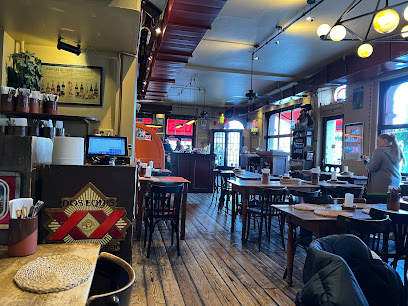
Cologne's Historic City Hall
Discover Cologne's Historisches Rathaus: A captivating journey through centuries of history, architecture, and civic pride in the heart of the city's vibrant Innenstadt.
The Historisches Rathaus der Stadt Köln, or Cologne City Hall, stands as a testament to the city's rich history and enduring civic pride. With documented origins stretching back over 800 years, it is considered the oldest city hall in Germany. The building is not just a seat of government; it's a captivating architectural ensemble, showcasing a blend of Gothic, Renaissance, and modern styles. Its iconic features, such as the intricate Renaissance loggia, the towering Gothic Ratsturm (Council Tower) adorned with historical figures, and the famed 'Platzjabbeck' that mocks passersby with its protruding tongue, make it a must-see landmark. Located in the heart of Cologne's Innenstadt (inner city), between Rathausplatz and Alter Markt, the City Hall offers visitors a glimpse into the city's past and present.
A brief summary to Historisches Rathaus der Stadt Köln
- Rathauspl. 2, Cologne, Innenstadt, 50667, DE
- +492212210
- Visit website
Local tips
- Time your visit to coincide with the Glockenspiel (carillon) performance at 9 AM, 12 PM, 3 PM, or 6 PM to hear the 48 bronze bells of the Ratsturm play traditional Cologne songs.
- Don't miss the Platzjabbeck, a wooden face on the Ratsturm that sticks its tongue out every hour, a historical symbol of the city's defiance.
- Visit the nearby Alter Markt during the Christmas season to experience one of Cologne's most charming Christmas markets, with the Rathaus as a stunning backdrop.
Getting There
-
Walking
From Cologne Cathedral (Kölner Dom), head southwest towards Domplatte. Walk straight on Domstraße until you reach the intersection with Am Hof street. Turn left onto Am Hof and continue straight until you reach the Rathausplatz. The Historisches Rathaus der Stadt Köln will be on your right at Rathauspl. 2. The walk is approximately 5-10 minutes.
-
Public Transport
If you are near Cologne Central Station (Köln Hauptbahnhof), you can take the U-Bahn (subway) Line 5, 16, or 18 from the station. Get off at the 'Heumarkt' stop. From there, walk northeast on Heumarkt towards the Rathausplatz. The Historisches Rathaus der Stadt Köln will be on your left at Rathauspl. 2. A single ticket costs approximately €3.00.
-
Taxi/Ride-Share
A taxi or ride-share from Cologne Central Station (Köln Hauptbahnhof) to the Historisches Rathaus will take approximately 5-10 minutes, depending on traffic. Expect to pay around €12-15. Taxi rates start at €4.00, with a price per km of €2.10 for the first 7km.
-
Parking
Parking is available at the Parkhaus Am Gürzenich, located nearby. Hourly rates are approximately €2.80, and daily rates are around €28. Another option is Parkhaus An Farina, with similar rates. Keep in mind that parking in the city center can be limited, especially during peak tourist season or events.
Discover more about Historisches Rathaus der Stadt Köln
Iconic landmarks you can’t miss
Historisches Rathaus der Stadt Köln
0.0 km
Discover Cologne's Historisches Rathaus: A captivating journey through centuries of history, architecture, and civic pride in the heart of the city's vibrant Innenstadt.
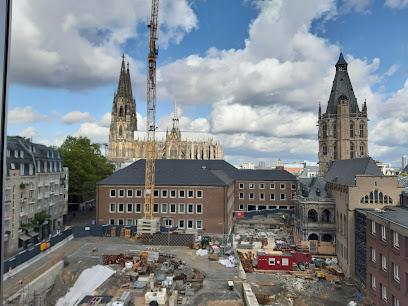
Cologne
0.1 km
Discover Cologne: A vibrant German city where ancient Roman history meets stunning Gothic architecture, world-class museums, and the lively spirit of the Rhineland.
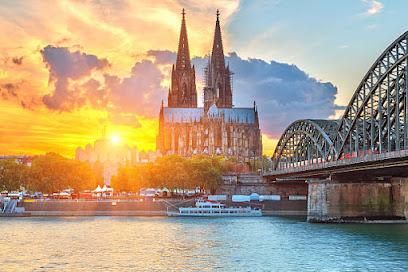
Der goldene Kupferstern
0.2 km
Experience Cologne's vibrant heart at Roncalliplatz, surrounded by iconic landmarks, bustling events, and the city's rich history and culture, offering an unforgettable adventure.

Ancient Roman Harbor Street
0.2 km
Explore Cologne's Ancient Roman Harbor Street: A captivating historical landmark offering a glimpse into the city's Roman past, showcasing its significance as a vital trading hub.
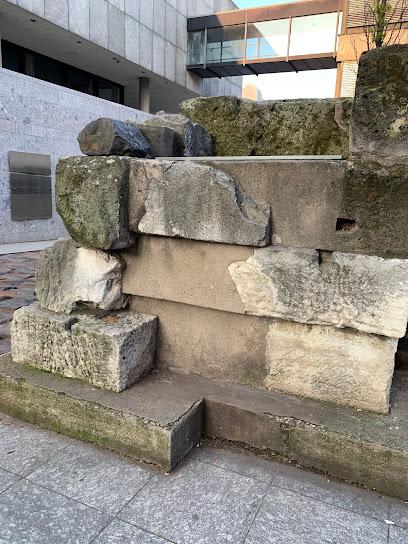
Experience Cologne
0.2 km
Explore Cologne's rich history, stunning architecture, and vibrant culture through expertly guided tours with Experience Cologne, a premier tour agency.
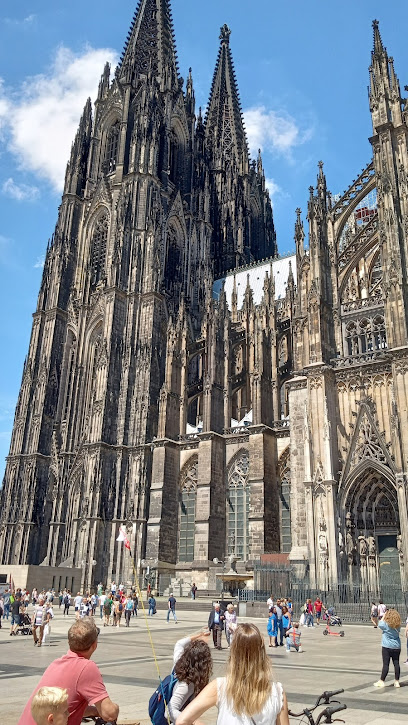
Guided Tours at the Cathedral
0.2 km
Experience the awe-inspiring grandeur of Cologne Cathedral, a UNESCO World Heritage site and Germany's most visited landmark, showcasing Gothic architecture and religious significance.
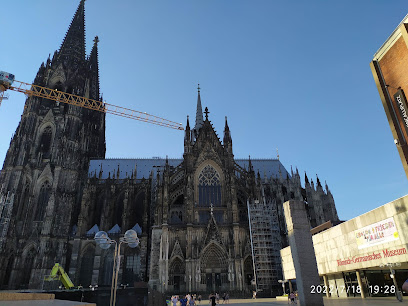
Am Hof 1
0.3 km
Discover Am Hof in Cologne: A historical square where Roman roots meet medieval charm and modern vibrancy, offering a captivating glimpse into the city's rich heritage.
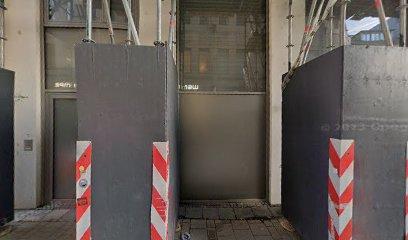
Roncallipl.
0.3 km
Experience the heart of Cologne at Roncalliplatz: where history meets vibrant culture, overlooked by the majestic Cathedral, and alive with year-round events.
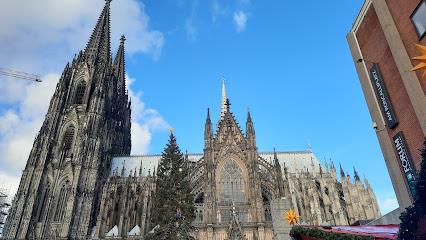
Heumarkt 43
0.3 km
Experience Cologne's vibrant heart at Heumarkt, a historic square blending medieval charm with modern energy, offering year-round events, culinary delights, and cultural experiences.
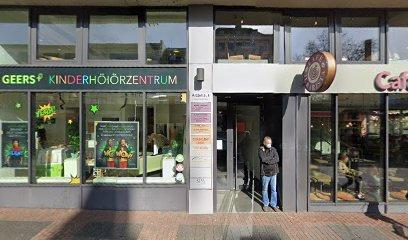
Heinrich-Böll-Platz
0.3 km
Experience Cologne's vibrant cultural heart at Heinrich-Böll-Platz, a dynamic square connecting the iconic Cathedral, Museum Ludwig, and Philharmonie, offering art, music, and stunning views.
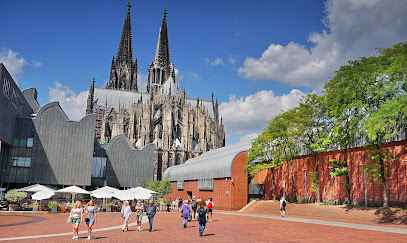
Petrusbrunnen
0.3 km
Discover the enchanting Petrusbrunnen on Cologne's Papstterrasse: a neo-Gothic fountain with a rich history and captivating charm, reflecting the city's enduring spirit.
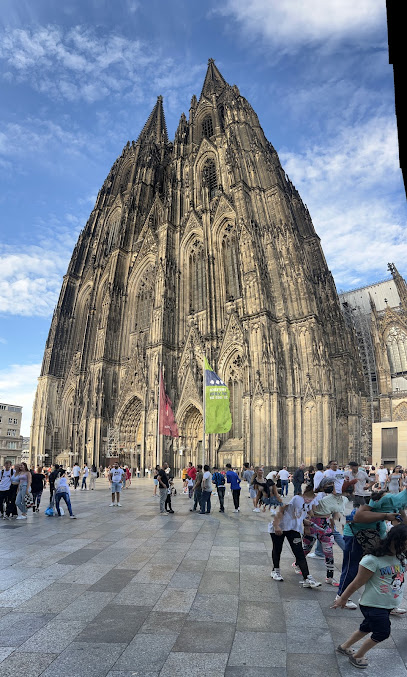
Barockfassade
0.3 km
Discover Cologne's architectural heritage at the Barockfassade, a beautifully preserved Baroque facade from 1696, offering a glimpse into the city's rich past and artistic evolution.
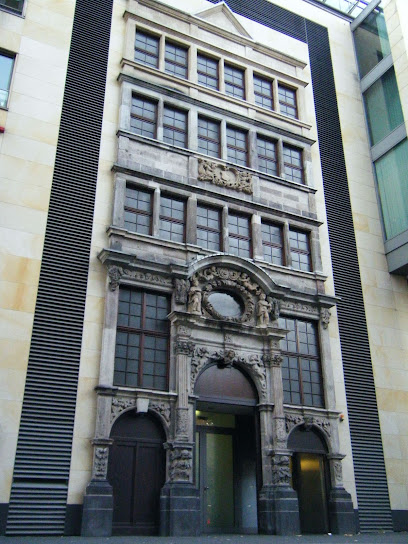
Paolozzibrunnen – Eduardo Paolozzi (1986)
0.3 km
Discover the Paolozzi Fountain in Cologne: a captivating blend of modern art, historical remnants, and playful interaction in the heart of the scenic Rheingarten park, a short walk from Cologne Central Station.
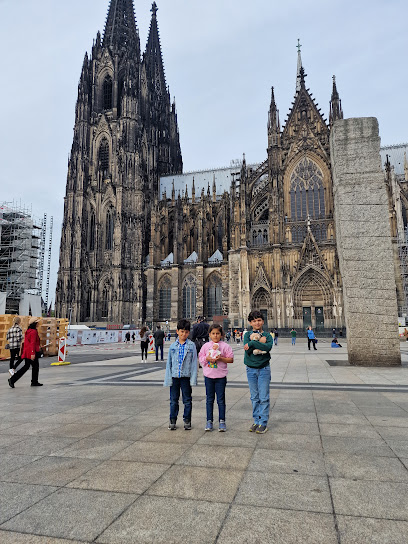
Shrine of the Three Kings
0.3 km
Explore the Shrine of the Three Kings in Cologne Cathedral, a stunning historical landmark filled with artistic treasures and spiritual significance.
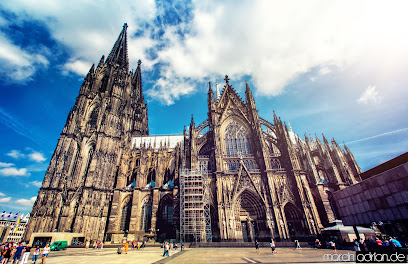
Cologne Cathedral
0.3 km
Experience the awe-inspiring grandeur of Cologne Cathedral, a UNESCO World Heritage site, where Gothic architecture, priceless relics, and stunning stained glass converge in the heart of Cologne.

Unmissable attractions to see
Jan von Werth-Brunnen, Köln
0.1 km
Discover the Jan von Werth Fountain in the heart of Cologne, a captivating historical landmark celebrating the city's rich heritage and culture.
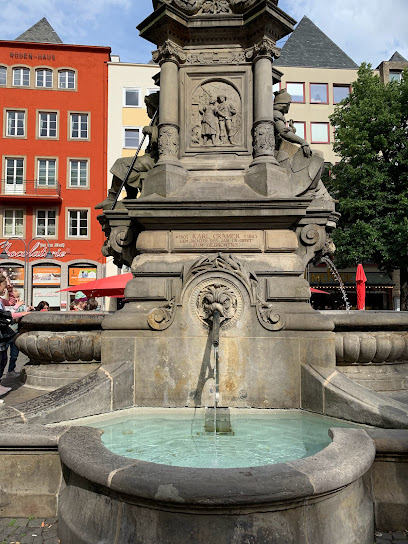
Alter Markt
0.1 km
Experience the vibrant culture and rich history of Cologne at Alter Markt, a lively square filled with cafes, shops, and stunning architecture.
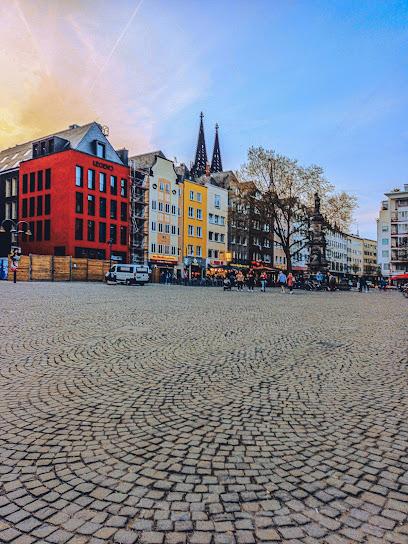
Römisches Praetorium
0.1 km
Explore the Römerliches Praetorium, an archaeological gem in Cologne revealing the city's rich Roman heritage through captivating ruins and informative exhibitions.
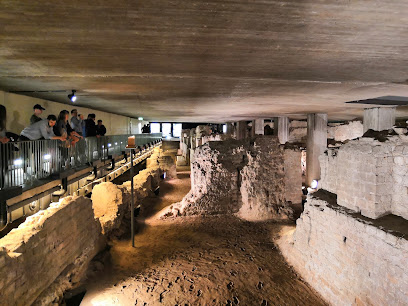
The Praetorium, the Roman Governor's Palace of Upper Germania, Cologne
0.1 km
Explore The Praetorium, Cologne's Roman Governor's Palace, an archaeological gem revealing the grandeur of ancient Germania.
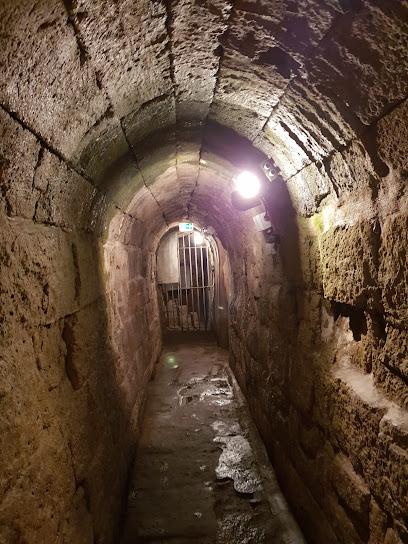
Time Ride
0.1 km
Experience Cologne's history like never before at Time Ride, where immersive storytelling meets cutting-edge technology in an unforgettable museum adventure.
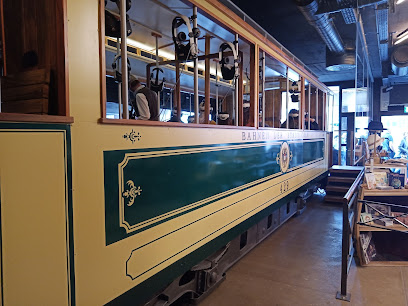
Römischer Abwasserkanal
0.1 km
Explore Cologne's Römer Abwasserkanal, an ancient Roman wastewater system showcasing the brilliance of historical engineering.
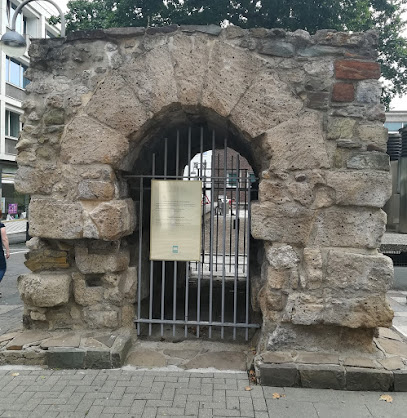
Brunnen Marsplatz
0.1 km
Discover the charm of Brunnen Marsplatz, Cologne's historical square filled with culture, stunning architecture, and vibrant local life.
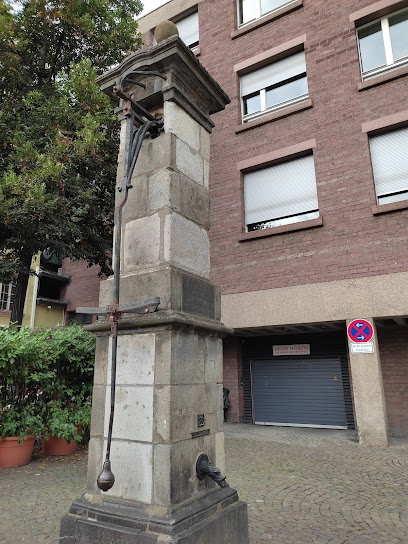
Tünnes und Schäl
0.1 km
Explore Tünnes und Schäl, a captivating sculpture in Cologne that embodies local folklore and cultural heritage, perfect for art enthusiasts and tourists alike.
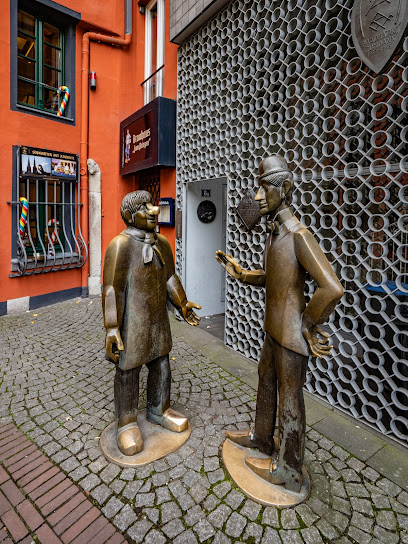
Schmitz Column
0.1 km
Explore the Schmitz Column, a captivating historical landmark in Cologne's Alter Markt, reflecting the city's rich culture and architectural beauty.

Duftmuseum im Farina Haus
0.1 km
Explore the rich history of fragrance at the Duftmuseum im Farina Haus in Cologne, the birthplace of Eau de Cologne, and immerse yourself in a sensory journey.
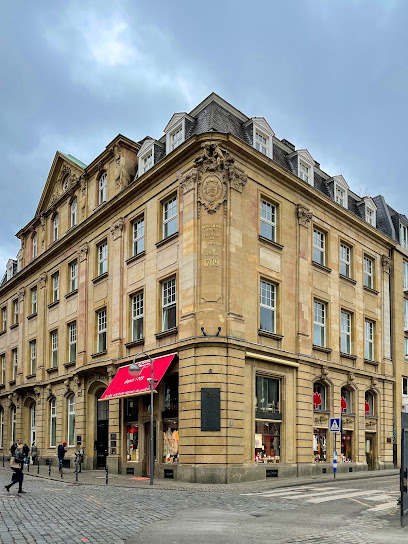
Wallraf-Richartz-Museum & Fondation Corboud
0.1 km
Explore the Wallraf-Richartz-Museum, a cultural gem in Cologne showcasing masterpieces from the medieval to the 19th century, perfect for art lovers.
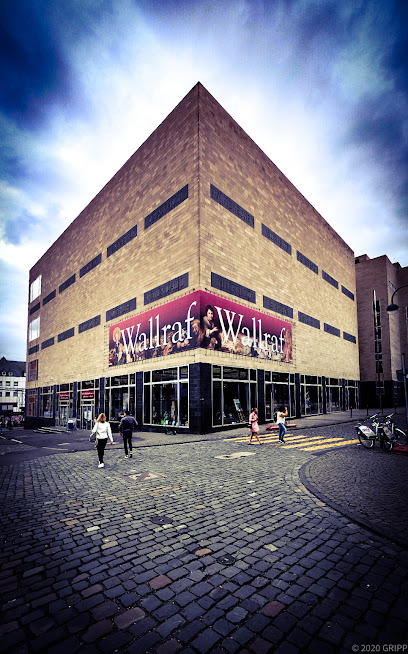
Willi-Ostermann-Brunnen
0.1 km
Discover the charm of the Willi-Ostermann-Brunnen, a captivating fountain in Cologne celebrating the city's musical heritage.
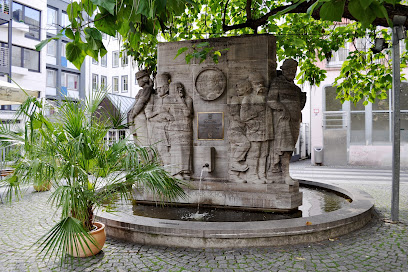
Great St. Martin Church
0.2 km
Explore Great St. Martin Church, a magnificent Gothic landmark in Cologne, showcasing stunning architecture and rich Catholic heritage.
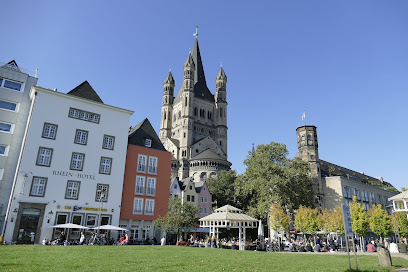
Tierbrunnen, Köln - Theo Heiermann & Elmar Hillebrand (1980)
0.2 km
Explore the artistic charm of Tierbrunnen, a stunning fountain in Cologne that captures the essence of the city's vibrant cultural heritage.

Heinzels Wintermärchen - Weihnachtsmarkt Kölner Altstadt
0.2 km
Discover the enchanting Heinzels Wintermärchen Christmas market in Cologne, where festive treats and handcrafted gifts create a magical holiday experience.
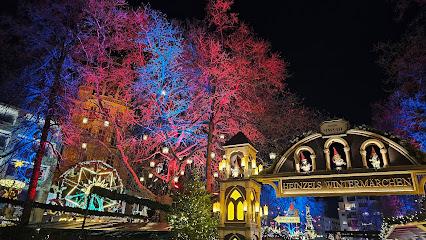
Essential places to dine
HACIENDA
0.1 km
Experience the vibrant flavors of Argentinian cuisine at Hacienda in Cologne - a perfect blend of tradition and innovation.
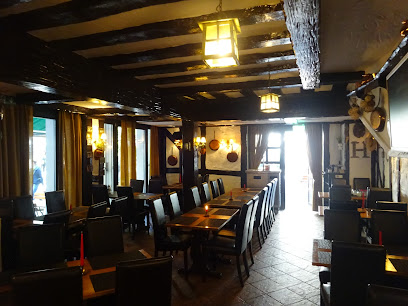
Peters Brauhaus
0.1 km
Discover Peters Brauhaus in Cologne - A lively brewpub serving authentic German cuisine and craft beers in an inviting atmosphere.
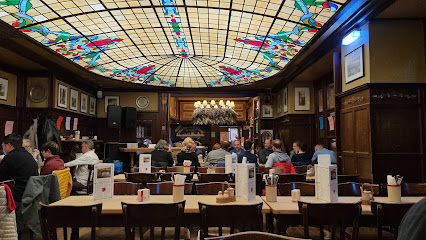
Servus Colonia Alpina
0.1 km
Discover the heart of Bavarian cuisine at Servus Colonia Alpina in Cologne – where tradition meets taste in every dish.
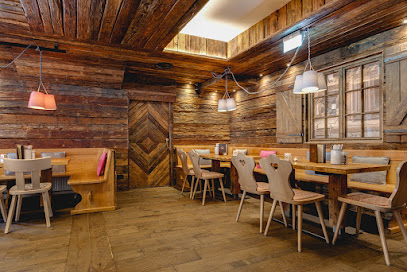
Gilden im Zims “Heimat kölscher Helden”
0.2 km
Discover authentic German flavors at Gilden im Zims, a lively beer hall in the heart of Cologne offering delicious cuisine and local Kölsch.
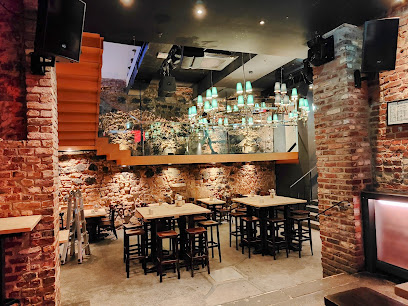
Keule
0.2 km
Experience authentic German flavors at Keule in Cologne - where tradition meets modern culinary artistry.
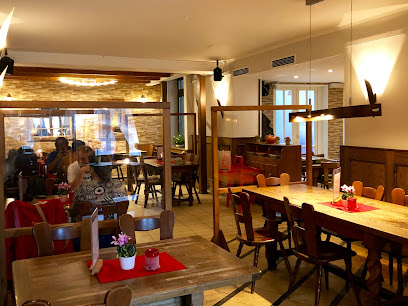
Hänneschen und die Pfeffermühle
0.2 km
Discover authentic German cuisine at Hänneschen und die Pfeffermühle in Cologne—where tradition meets taste.
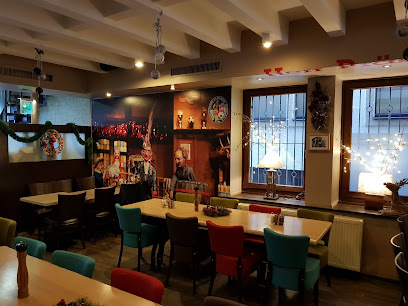
Oma's Küche
0.2 km
Experience authentic German cuisine at Oma's Küche in Cologne - where tradition meets taste in every dish.
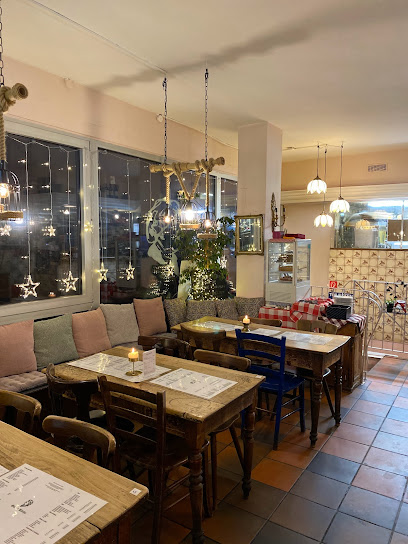
Brauhaus Sünner im Walfisch
0.2 km
Experience Cologne's brewing tradition at Brauhaus Sünner im Walfisch – where authentic flavors meet local charm.
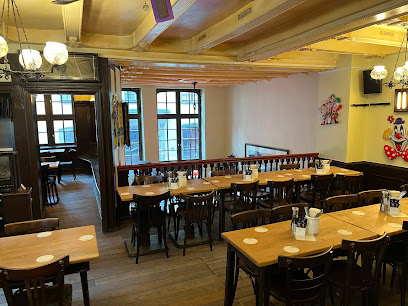
RheinZeit
0.2 km
Experience authentic German cuisine at RheinZeit in Cologne, where tradition meets modern dining in a vibrant atmosphere.
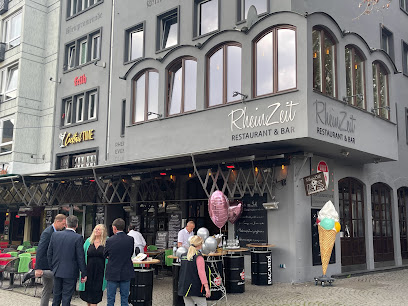
Brauhaus FRÜH am Dom
0.2 km
Discover Brauhaus FRÜH am Dom: Cologne's iconic beer hall serving traditional German cuisine and local brews in a vibrant atmosphere.
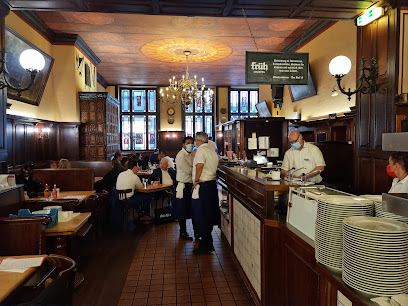
Restaurant Mama Leone
0.2 km
Savor authentic Italian flavors at Restaurant Mama Leone in Cologne – where every meal is a celebration of taste and tradition.
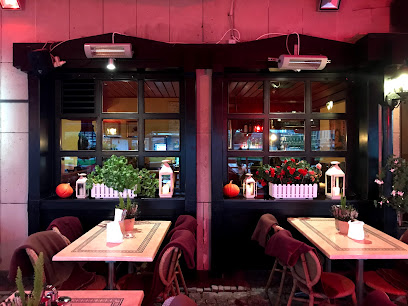
Haxenhaus
0.2 km
Experience authentic German flavors at Haxenhaus in Cologne – where tradition meets taste by the Rhine River.
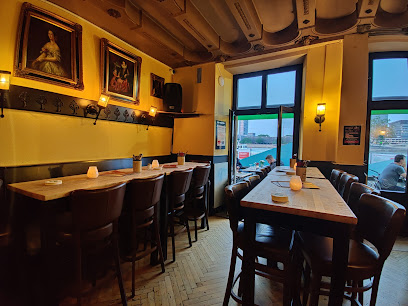
Em Krützche
0.2 km
Savor traditional German flavors at Em Krützche, a charming inn and restaurant in the heart of Cologne's Innenstadt district.

The Small Steakhouse
0.3 km
Experience top-quality steaks at The Small Steakhouse in Cologne - where flavor meets warmth in every bite.
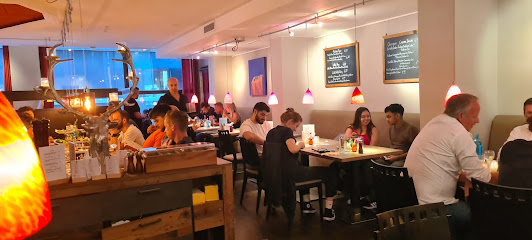
Restaurant maiBeck
0.3 km
Experience innovative bistro cuisine in Cologne at Restaurant maiBeck - where local flavors meet culinary creativity.
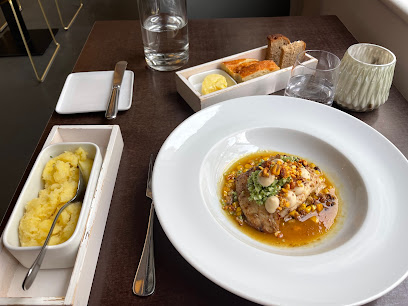
Markets, malls and hidden boutiques
Casado Store
0.1 km
Discover the heart of Cologne's fashion at Casado Store, where style meets elegance and every piece is a statement.
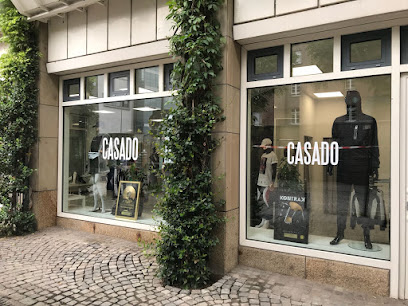
Close Up GmbH
0.2 km
Explore Close Up GmbH: Cologne's premier gift shop for unique posters and artistic treasures in the heart of the city.
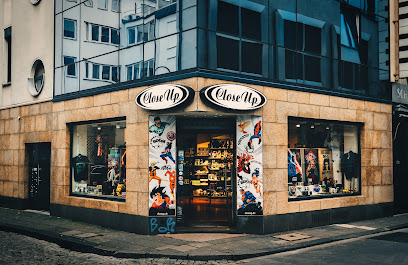
Elbenwald
0.2 km
Explore the enchanting Elbenwald gift shop in Cologne, where fantasy meets shopping with clothing, toys, and unique gifts for all ages.
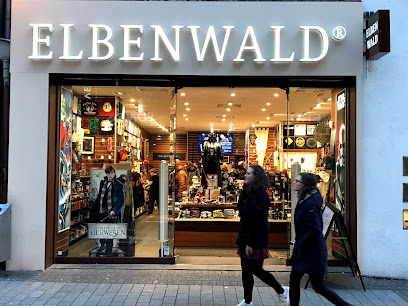
Früh Shoppen
0.2 km
Explore Früh Shoppen in Cologne for a delightful shopping experience filled with local treasures and unique finds.

Pylones
0.2 km
Explore Pylones in Cologne for unique gifts and home goods, filled with creativity and playful designs to brighten your day.
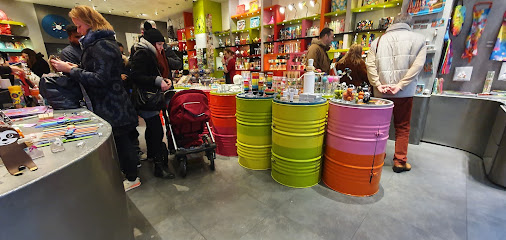
MUJI Cologne Store
0.2 km
Explore the MUJI Cologne Store for a unique selection of minimalist products that blend functionality with style, right in the heart of the city.
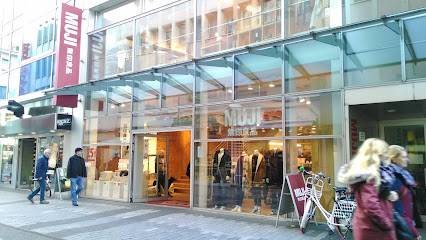
Victorinox Store Köln
0.3 km
Discover Swiss quality at the Victorinox Store in Cologne, featuring iconic knives, stylish luggage, and exclusive apparel in a modern shopping atmosphere.
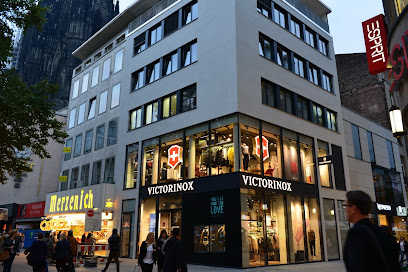
BVLGARI
0.3 km
Explore BVLGARI in Cologne for an exquisite range of luxury jewelry, fashion accessories, and timeless leather goods in a sophisticated setting.
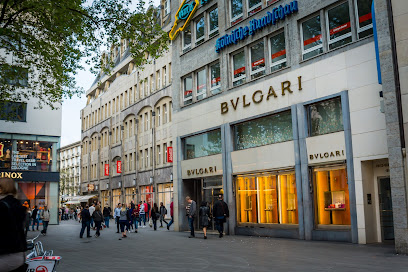
LOUIS VUITTON Cologne Store
0.3 km
Explore the luxury of Louis Vuitton in Cologne, featuring exquisite leather goods and fashion accessories in a stunning retail environment.
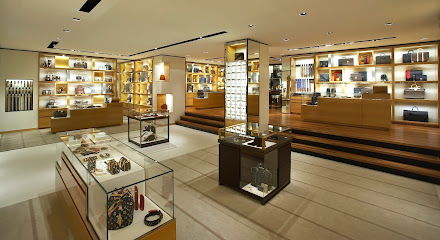
Domkloster 4 GmbH
0.3 km
Explore the heart of Cologne at Domkloster 4 GmbH, your go-to gift shop for unique souvenirs and local crafts that embody the city's spirit.
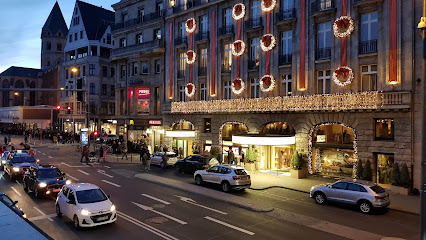
UNIQLO Köln
0.3 km
Explore stylish and affordable fashion at UNIQLO Köln, where contemporary design meets comfort in the heart of Cologne.
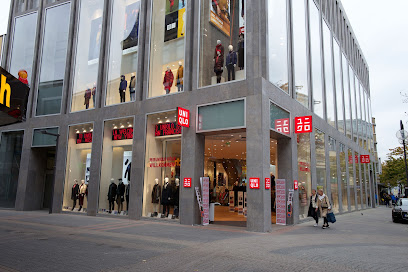
4711 Shop am Dom
0.3 km
Explore the iconic 4711 Shop am Dom in Cologne, where history meets modern fragrance in a delightful gift shopping experience.
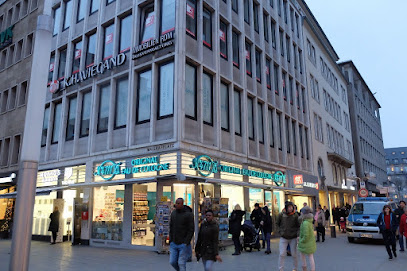
Montblanc Boutique
0.3 km
Discover timeless luxury at Montblanc Boutique in Cologne, home to exquisite writing instruments and elegant leather goods.
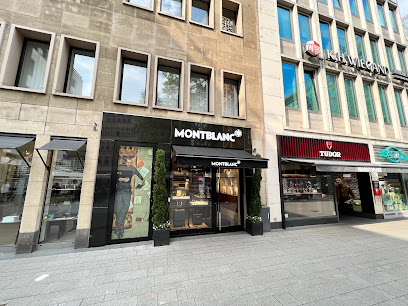
BOGNER Köln
0.3 km
Explore BOGNER Köln - where luxury fashion meets contemporary style in the heart of Cologne.

Manufactum Warenhaus
0.4 km
Explore the charm of Cologne at Manufactum Warenhaus, where quality gifts, clothing, and home goods await every discerning traveler.
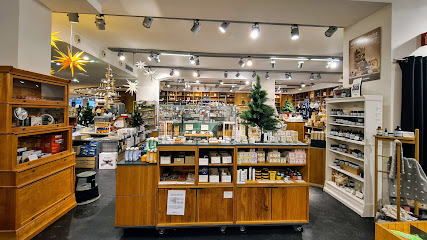
Essential bars & hidden hideouts
The Corkonian Irish pub
0.1 km
Experience the heart of Ireland at The Corkonian Irish Pub in Cologne, where traditional food, drinks, and live music create unforgettable memories.
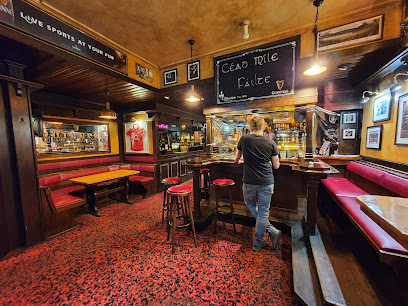
Papa Joe's Biersalon
0.1 km
Experience the vibrant pub culture of Cologne at Papa Joe's Biersalon, where great beer and hearty meals await in a lively atmosphere.
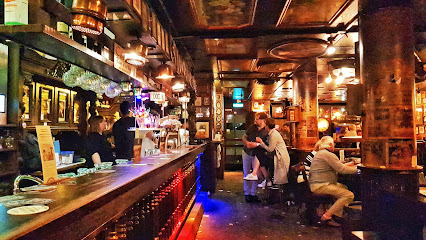
Barney Vallely's
0.1 km
Discover the essence of Ireland at Barney Vallely's, a lively pub in Cologne with authentic food, drinks, and vibrant entertainment.
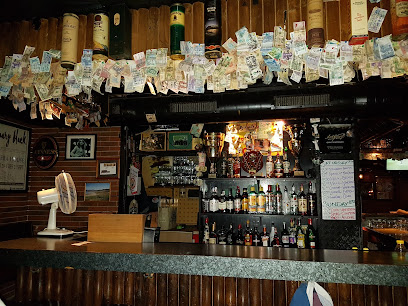
Bierbaum
0.1 km
Discover the lively Bierbaum bar in Cologne, where great drinks and a welcoming atmosphere blend seamlessly for an unforgettable night out.
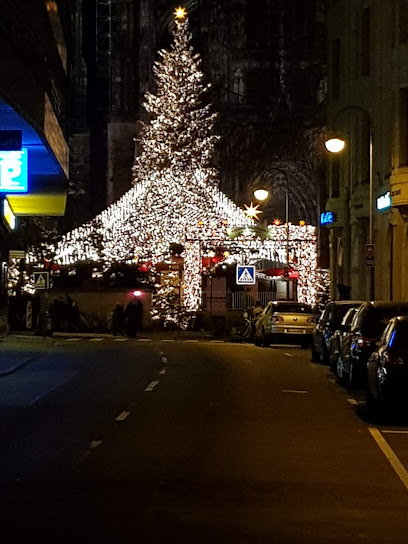
Sonderbar - Köln
0.2 km
Experience the best local brews and a vibrant atmosphere at Sonderbar, a must-visit bar in the heart of Cologne.
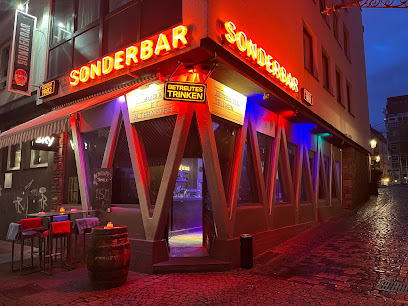
The Copper Pot - Köln
0.2 km
Experience Irish hospitality at The Copper Pot in Cologne, where lively ambiance, delicious cocktails, and live music await every visitor.
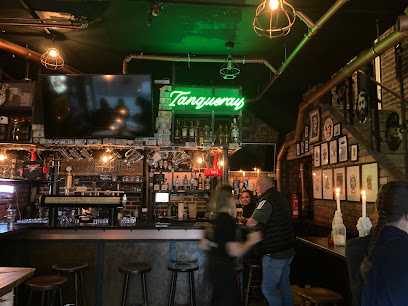
die kunstbar
0.4 km
Discover Die Kunstbar in Cologne: A vibrant bar blending art, music, and delicious drinks in the heart of the city’s nightlife.
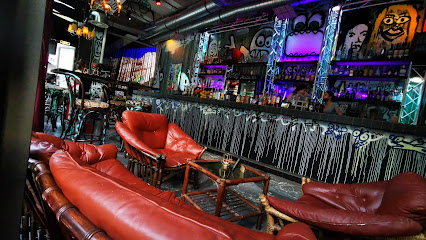
Piano Bar
0.4 km
Discover the enchanting Piano Bar in Cologne, where signature cocktails, live music, and a chic atmosphere create a perfect nightlife experience.
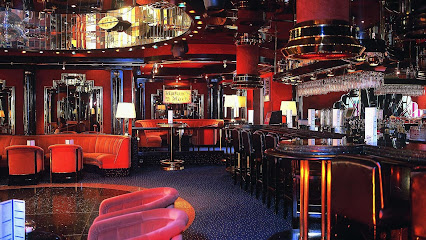
Legends Bar & Terrasse
0.7 km
Experience the ultimate cocktail bar in Cologne with stunning Rhine views, sophisticated atmosphere, and expertly crafted drinks at Legends Bar & Terrasse.
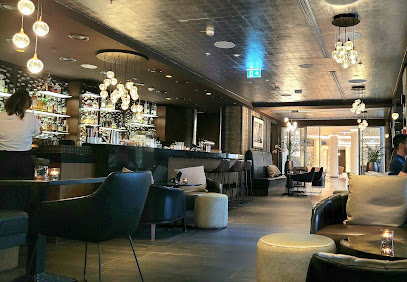
Plüsch Bar & Lounge (im Köln Marriott Hotel)
0.8 km
Experience luxury and relaxation at Plüsch Bar & Lounge in Cologne, where exquisite cocktails and elegant ambiance await you.
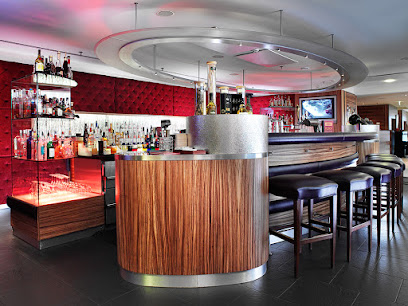
Papa Rudis - Köln
0.8 km
Discover the lively atmosphere and local brews at Papa Rudis, Cologne's must-visit pub for a memorable night out.

BAR BOTANIK
0.9 km
Discover BAR BOTANIK in Cologne, where lush botanical decor meets expertly crafted cocktails for an unforgettable nightlife experience.

FRIESEN Bar - Cocktailbar Köln
1.1 km
Discover the exciting nightlife at FRIESEN Bar in Cologne - a cocktail haven with signature drinks and a vibrant atmosphere.
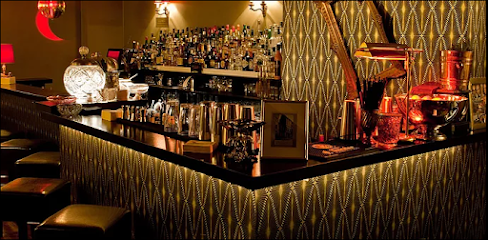
BON-Brauhaus ohne Namen
1.1 km
Experience the heart of Cologne's craft beer culture at BON-Brauhaus ohne Namen, a brewpub offering unique brews and delicious bites in a cozy setting.
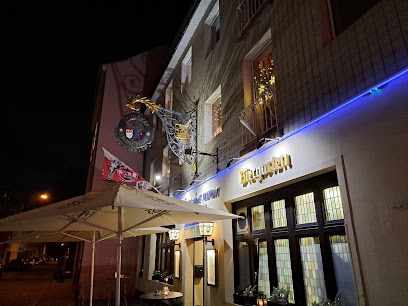
CAFE ESPECIAL Köln
1.1 km
Experience authentic Mexican flavors at Café Especial in Cologne, where vibrant dishes and a lively atmosphere create unforgettable dining moments.
